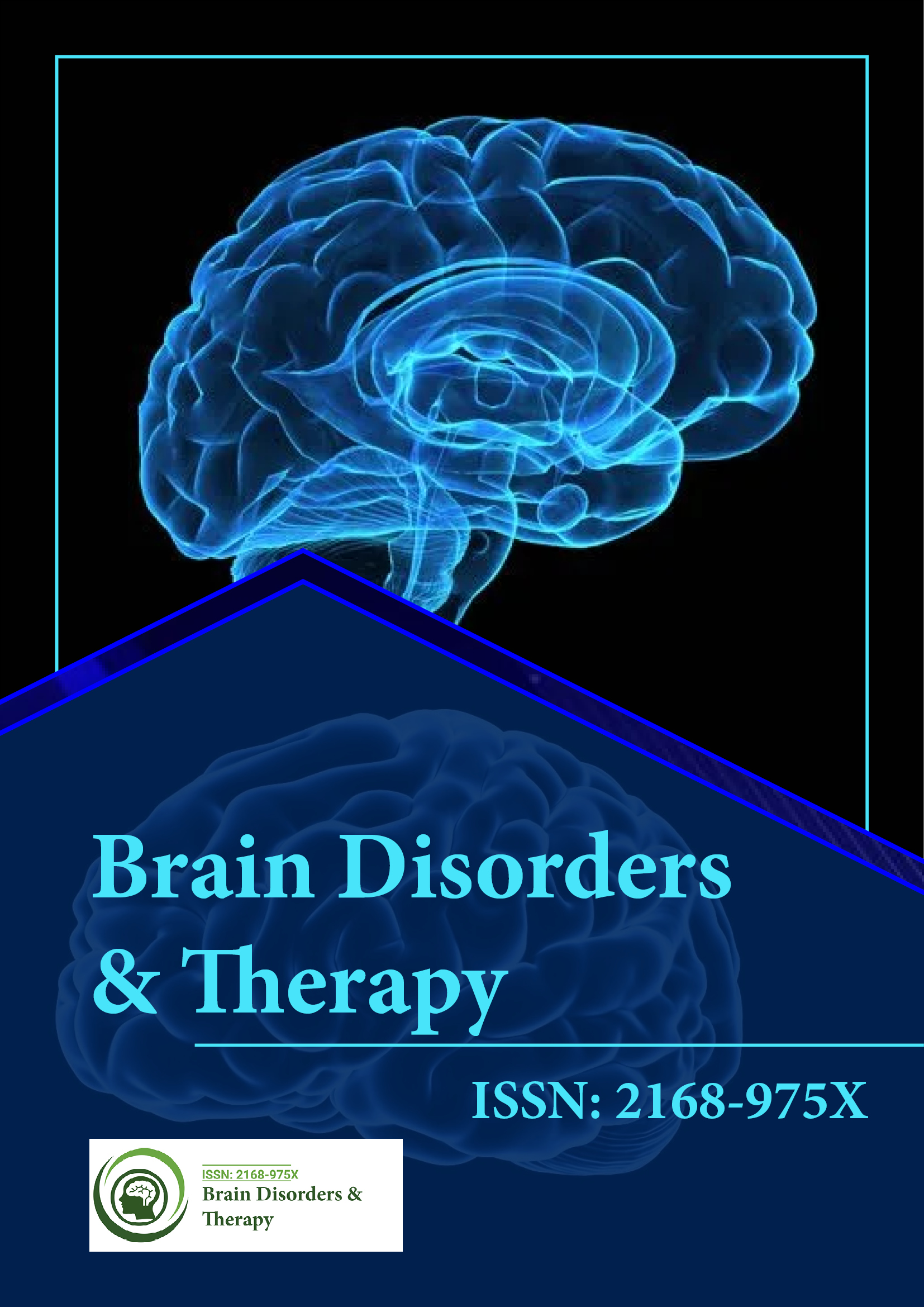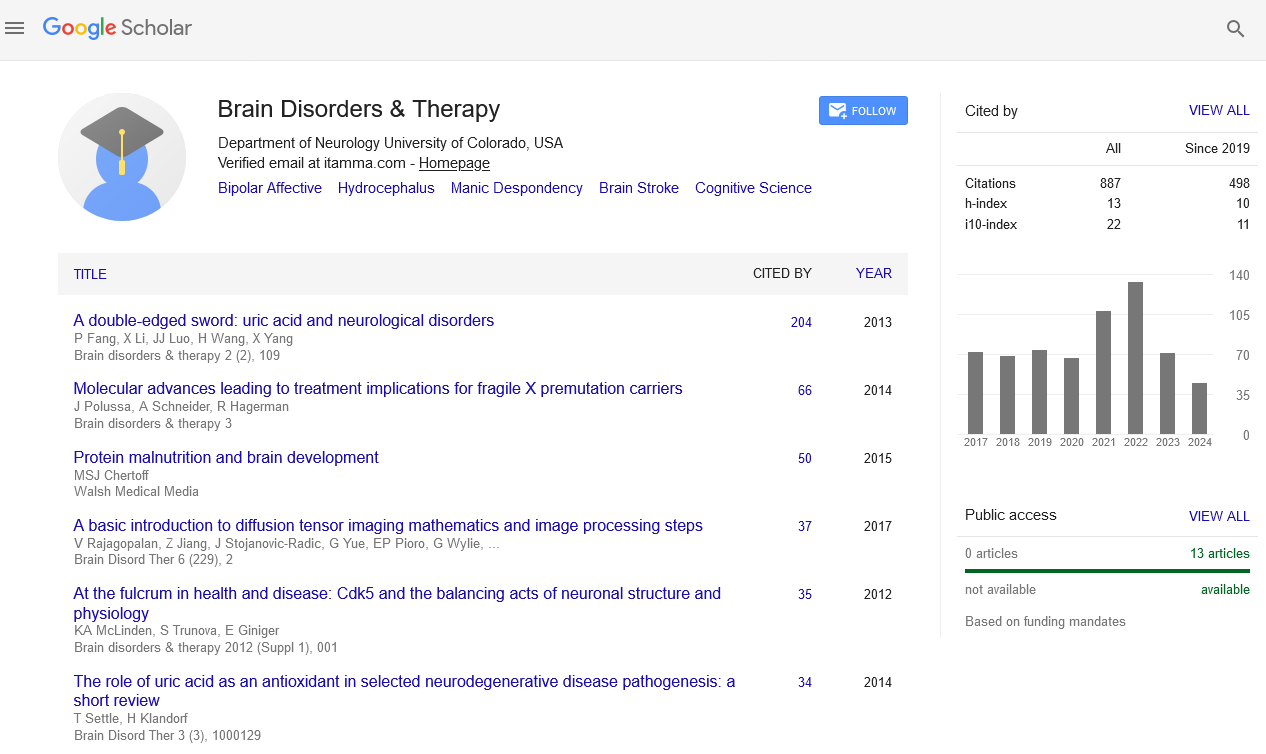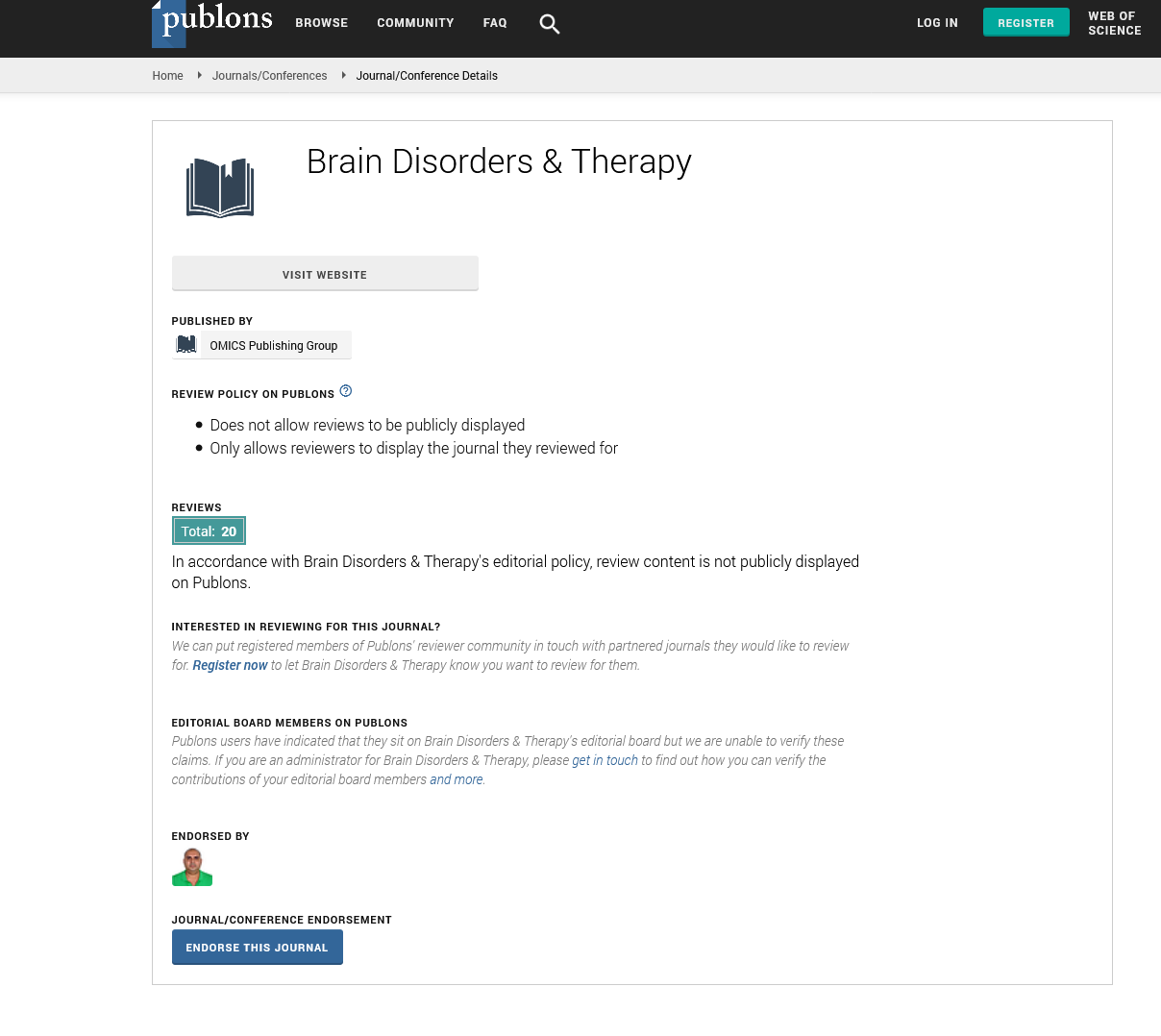Indexed In
- Open J Gate
- Genamics JournalSeek
- JournalTOCs
- RefSeek
- Hamdard University
- EBSCO A-Z
- OCLC- WorldCat
- Publons
- Geneva Foundation for Medical Education and Research
Useful Links
Share This Page
Journal Flyer

Open Access Journals
- Agri and Aquaculture
- Biochemistry
- Bioinformatics & Systems Biology
- Business & Management
- Chemistry
- Clinical Sciences
- Engineering
- Food & Nutrition
- General Science
- Genetics & Molecular Biology
- Immunology & Microbiology
- Medical Sciences
- Neuroscience & Psychology
- Nursing & Health Care
- Pharmaceutical Sciences
Opinion - (2025) Volume 14, Issue 2
Patterns of Thalamic Connectivity in Individuals with Early Schizophrenia
Jacopo Marzetti*Received: 26-May-2025, Manuscript No. BDT-25-29726 ; Editor assigned: 28-May-2025, Pre QC No. BDT-25-29726 (PQ); Reviewed: 11-Jun-2025, QC No. BDT-25-29726 ; Revised: 18-Jun-2025, Manuscript No. BDT-25-29726 (R); Published: 25-Jun-2025, DOI: 10.35248/2168-975X.25.14.306
Description
Schizophrenia is a chronic and debilitating psychiatric disorder that disrupts thought, perception and behavior. Characterized by symptoms such as hallucinations, delusions, disorganized thinking and cognitive impairments, it affects approximately one percent of the global population. While much attention in past decades has focused on cortical regions such as the prefrontal cortex and hippocampus, recent findings emphasize the importance of subcortical structures, particularly the thalamus.
The thalamus serves as a central communication hub that regulates the exchange of information between cortical and subcortical regions. Disruptions within this structure can profoundly affect cognition, perception and attention domains that are heavily impaired in schizophrenia. Importantly, structural and functional abnormalities of the thalamus appear to emerge early in the disease, even during prodromal phases or in first-episode psychosis. Understanding these changes is critical, not only for clarifying the pathophysiology of schizophrenia but also for identifying potential biomarkers and therapeutic targets.
Role of the thalamus in brain function
The thalamus is composed of multiple nuclei that serve as gateways for sensory, motor and cognitive information to reach the cortex. Each nucleus has specialized projections to distinct cortical regions, creating highly organized thalamocortical loops. These loops are essential for integrating perception, attention, motor coordination and executive control. In addition to relaying information, the thalamus acts as a regulator, filtering sensory input and coordinating neural synchrony across brain networks. Because of its central role in network integration, disruptions within the thalamus can propagate through multiple neural systems, leading to widespread dysfunction. This mechanism aligns closely with the symptoms of schizophrenia, in which sensory processing, working memory and executive functioning are all compromised. Consequently, the thalamus has become a central focus in understanding how network-level disturbances contribute to the disorder.
Functional abnormalities of the thalamus
While structural differences are important, functional abnormalities provide further insight into how thalamic disruption contributes to schizophrenia. Resting-state functional MRI has revealed altered thalamic connectivity patterns in early stages of the disorder. Patients often display reduced connectivity between the thalamus and prefrontal cortex, which aligns with deficits in executive function and negative symptoms such as apathy and reduced motivation. At the same time, increased connectivity between the thalamus and sensorimotor regions is commonly observed. This imbalance may underlie perceptual disturbances and hallucinations, as the brain overemphasizes sensory input at the expense of higher-order regulation.
Task-based fMRI studies provide complementary evidence. During attention and working memory tasks, individuals with first-episode psychosis show blunted thalamic activation compared to healthy controls. This underactivation correlates with impaired task performance, suggesting that the thalamus is less effective at modulating cortical responses during cognitive demand. Notably, such abnormalities are often observed before significant medication exposure, pointing toward intrinsic deficits rather than drug effects.
Thalamic dysconnectivity hypothesis
The accumulating evidence of structural and functional alterations has led to the development of the thalamic dysconnectivity hypothesis. This framework posits that schizophrenia arises not from localized brain dysfunction but from failures in network integration, with the thalamus as a central node. The thalamus maintains bidirectional communication with key regions such as the prefrontal cortex, hippocampus, striatum and cerebellum. Disruption of these pathways can impair synchronization and information flow, resulting in the fragmented cognition and abnormal perceptions that define schizophrenia. Dysconnectivity may emerge from a combination of genetic and developmental insults that affect synaptic pruning, myelination and neurotransmitter regulation during adolescence and early adulthood—the very period when schizophrenia commonly manifests. Thus, the thalamus is positioned as both a mediator and amplifier of widespread neural disruption, making it a critical structure in both disease onset and progression.
Thalamic changes as biomarkers
The early and consistent appearance of thalamic abnormalities has generated interest in their potential as biomarkers for schizophrenia risk, diagnosis and treatment monitoring. Predictive models combining structural MRI, diffusion imaging and functional connectivity data have shown promise in identifying individuals at ultra-high risk of developing psychosis. Machine learning approaches can classify at-risk individuals above chance levels when thalamic features are included, especially when combined with genetic or clinical data.
Beyond risk prediction, the thalamus also demonstrates potential for tracking treatment response. Several longitudinal studies have found that normalization of thalamic connectivity after antipsychotic treatment is associated with symptom reduction, particularly in negative and cognitive domains. This suggests that functional imaging of the thalamus may eventually serve as a non-invasive biomarker to guide treatment decisions and monitor therapeutic outcomes.
Citation: Marzetti J (2025). Patterns of Thalamic Connectivity in Individuals with Early Schizophrenia. Brain Disord Ther. 14:306.
Copyright: © 2025 Marzetti J. This is an open-access article distributed under the terms of the Creative Commons Attribution License, which permits unrestricted use, distribution, and reproduction in any medium, provided the original author and source are credited.


